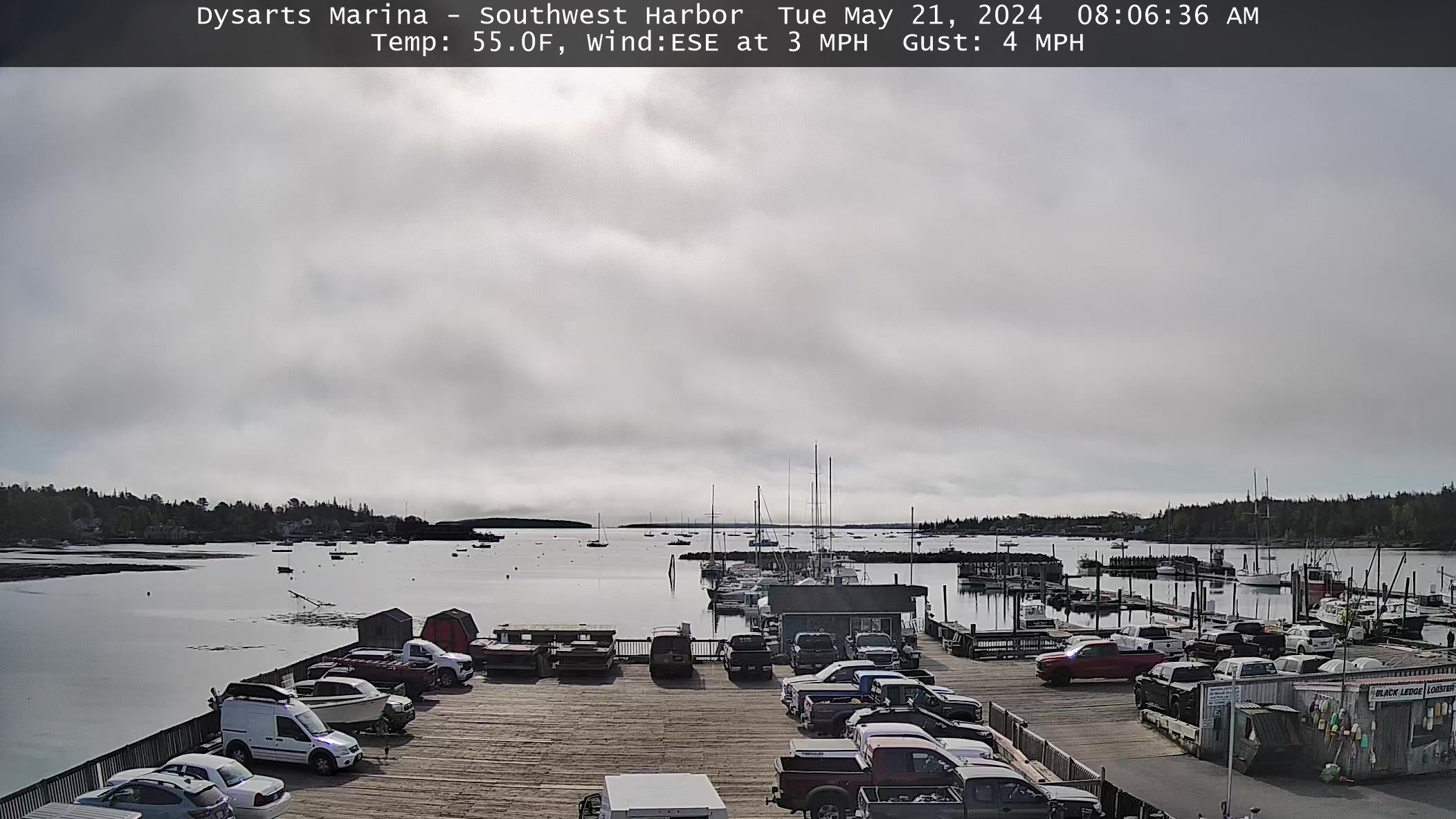Bar Harbor, Maine Weather Cams
Bar Harbor Inn Cam (North View)
Bar Harbor Inn Cam (West View)
Bar Harbor Inn Cam (East View)
Dysart’s Marina, Southwest Harbor Cam

Northeast Harbor Cam

Hancock County/Bar Harbor Airport FAA Cam
Bar Harbor, Maine: A Storied Seaside Haven Through the Centuries
Bar Harbor, Maine Weather Cams. Perched on the eastern shore of Mount Desert Island, Bar Harbor, Maine, is a town steeped in history, natural beauty, and maritime tradition. From its early days as a home to Native American tribes to its rise as a retreat for wealthy elites, and eventually, a hub for outdoor enthusiasts and conservationists, Bar Harbor’s journey through time is one of transformation and resilience.
Origins: The Wabanaki and European Settlement
Long before European settlers arrived, the Wabanaki people inhabited the lands around Bar Harbor. For thousands of years, they utilized the abundant natural resources of the area for sustenance, fishing the rich waters and hunting in the dense forests. To them, Mount Desert Island was a place of both practicality and spiritual significance.
In 1604, the French explorer Samuel de Champlain encountered the island and gave it its first European name, “Isles des Monts Déserts,” meaning “Island of Deserted Mountains.” Throughout the 17th and 18th centuries, French and English explorers sought control of the region, but settlement remained sparse due to the harsh coastal climate and ongoing conflicts. Eventually, English settlers began establishing permanent communities along the rugged shores, forming the foundation for what would become Bar Harbor.
A Fishing Village to a Tourist Retreat
Throughout the 19th century, Bar Harbor grew from a modest fishing village into a popular summer resort. The town, originally known as Eden, flourished as locals made their living from fishing, shipbuilding, and timber harvesting. The rugged coastline and picturesque landscapes, however, began to attract visitors from beyond Maine’s borders, particularly artists and writers who sought inspiration from its unspoiled beauty.
By the mid-19th century, the town had transformed into a haven for the country’s wealthy elite. Grand hotels and sprawling summer estates were built to accommodate the affluent travelers who arrived by steamboat or train. The name “Bar Harbor” was officially adopted in 1918, a nod to the sandbar visible at low tide between Mount Desert Island and Bar Island. As the town’s reputation as a luxurious retreat grew, so did its influence on conservation efforts.
Conservation and the Founding of Acadia National Park
As development increased, so did concerns about preserving the area’s natural beauty. The early 20th century saw the rise of conservation efforts led by individuals like George B. Dorr and John D. Rockefeller Jr., both of whom played key roles in the formation of Acadia National Park in 1919. Through generous land donations and funding for trail and road construction, these visionaries ensured that Mount Desert Island remained a protected haven for future generations.
Rockefeller’s famed carriage roads, built throughout the 1920s and 1930s, allowed visitors to explore the scenic terrain without disrupting the ecosystem with automobiles. These efforts, coupled with widespread appreciation for Acadia’s breathtaking landscapes, helped solidify Bar Harbor’s place as the gateway to one of America’s most treasured national parks.
The Great Fire of 1947 and the Town’s Revival
Despite its success as a tourist destination, Bar Harbor faced one of its greatest trials in 1947. That year, a devastating wildfire swept across Mount Desert Island, destroying much of the town and its surrounding forests. Hundreds of buildings—including many historic summer estates—were lost, and the blaze fundamentally altered the town’s architectural landscape.
Following the fire, Bar Harbor underwent a transformation. The once opulent summer retreats gave way to a more modest, welcoming atmosphere, shifting the town’s focus from exclusivity to accessibility. The rebuilding efforts emphasized year-round tourism, outdoor activities, and environmental stewardship, strengthening Bar Harbor’s identity as both an economic hub and a place of natural preservation.
Modern-Day Bar Harbor: A Coastal Jewel
Today, Bar Harbor stands as a beacon of coastal charm, drawing millions of visitors each year. Acadia National Park remains its greatest attraction, offering visitors the chance to hike Cadillac Mountain, witness breathtaking ocean views, and explore the diverse ecosystems that flourish along the rugged shoreline. The town itself is rich in culture, with a bustling downtown filled with local shops, seafood restaurants, and art galleries.
Bar Harbor’s connection to the sea remains strong. Whale-watching tours, lobstering excursions, and boat trips continue to celebrate the area’s maritime heritage. Environmental conservation remains a priority, ensuring that both Acadia and Bar Harbor’s coastal ecosystems are preserved for future generations.
The history of Bar Harbor is a testament to the enduring relationship between people and nature. From its Wabanaki roots to its rise as a haven for artists, aristocrats, and adventurers, the town’s legacy is woven into the fabric of Maine’s coastal history. Through triumphs and setbacks, Bar Harbor has remained a place of inspiration, resilience, and natural splendor—a timeless retreat shaped by land and sea.
For more information, visit the Bar Harbor, Maine official website.
